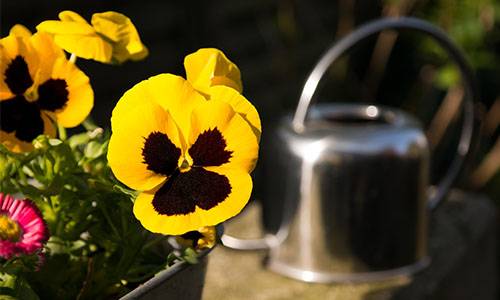

With the recent weather temperature rise, the transpiration rate of water on the surface of the plant leaves will also be faster, in order to increase air humidity, to make up for the lack of water plants, many flower friends will choose to use the watering can for houseplants water on the leaves of plants, in order to promote the healthy growth of green plants.
PLANTS THAT ARE SUITABLE FOR WATER SPRAYING
In fact, roughly speaking, broad-leaved or foliage green plants are suitable for foliar sprayings, such as greenery, hanging orchids, rubber trees, dripping water Goddess of Mercy, etc.
For these plants, using spray cans to spray water on the foliage in hot weather can not only increase air humidity and facilitate plant respiration, but also play a role in lowering the temp
erasure and keeping the foliage evergreen and light.
CAUTION
- foliar spraying time to pay attention not to choose the water pressure is too strong tools, ordinary spray cans can be, too strong water flow but will hurt the surface of the leaves, causing many adverse effects on plants.
- spraying time to pay attention to avoid the noon light is the too strong moment, I suggest that it is best to choose in the early morning, so that not only to avoid strong light erosion but also to promote the plant to the best state to start breathing and photosynthesis.
- The number of spraying should be decided according to the plant’s habit and appearance, for example, the plant with broad leaves can be sprayed with water three or four times a week, and for the plant with slender leaves and not tolerant to waterlogging, spraying once a week is perfectly fine.
PLANTS THAT CAN NOT BE SPRAYED WITH WATER
1. First of all, some plants with fine fuzz on the surface of the leaves can not be sprayed with water, such as African violet, begonia, big rock tree, etc.
These flowers have a layer of fluff on the surface of the leaves, if they are sprayed with water, the water will be attached to the leaves, not easy to evaporate, after a long time, but will lead to leaf decay.
The best way is to spray some water into the air around these plants so that you can play the effect of increasing air humidity.
2. Drought-tolerant plants are also not suitable for foliar sprayings, such as cactus, crabapple, longevity flowers, succulent, etc. These plants have a need for water. These plants do not need much water, too humid an environment will have a lot of adverse effects on their growth.
For these plants, the best way is to properly control water in hot weather, do not water too much, and do not spray water on their foliage, otherwise, it will accelerate their death process.
3. There are also plants whose new leaves and flower buds should not be exposed to water, otherwise they will rot. For example, the young leaves at the top of the cyclamen and the new buds of the gerbera daisy should not be exposed to water, otherwise, they will immediately rot or even die.
For these plants, if the plant’s growth is not good, the leaves really need water, you can use a damp cloth or cotton swab, dipped in water, and then gently wipe along the veins of the leaves, which can play a role in promoting the healthy growth of flowers.


